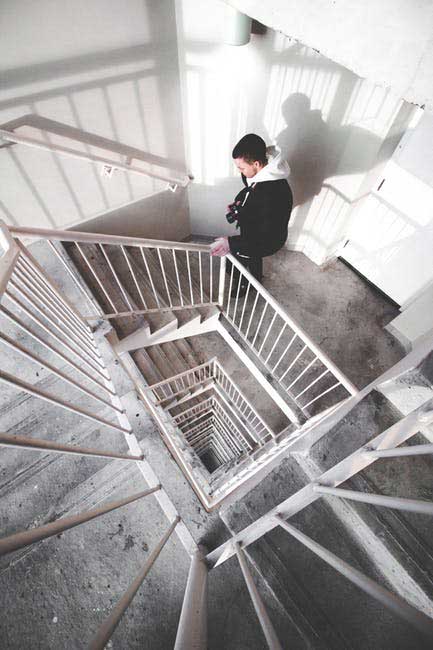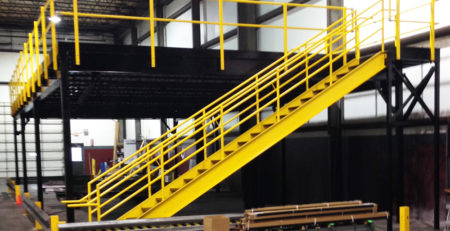OSHA Stairs vs. IBC Stairs: What Are the Differences in Safety Codes?
Emergency rooms in the United States treat almost 3 million fall-related injuries every year.
According to the National Council on Aging, the cost of fall injuries tops $50 billion annually. Many falls take place on the job or in public places, saddling employers and commercial enterprises with the associated costs.
It is possible to protect your business or organization from these expenses. The right set of IBC or OSHA stairs can save you millions. Read on to learn how.
What kind of stairs do you need?
There are three primary types of stairs.
- Residential
- Commercial
- Industrial
Residential stairs are those found in private homes. They are regulated by state and local building codes.
Commercial stairs are those intended for public use. They may be internal or external to a building. Commercial stair design must comply with International Building Code (IBC) standards.
Industrial stairs are stairs located in privately owned buildings. Most commonly, these are places of employment such as factories or manufacturing facilities. These stairs must comply with Occupational Safety and Health Administration (OSHA) regulations.
IBC Stairs
Open to the public, commercial stairs must accommodate a wide range of users. People of all ages, sizes, and mobility levels must be able to use them safely. The commercial stair code reflects these diverse users and their needs.
To this end, the IBC stair code requires:
- Stairways to be no less than 36 inches in width.
- Landings in all sets of stairs more than 12 feet in height.
- Handrails or side-guards on stairs and platforms.
- Closed risers four to seven inches high.
- Tread depth not less than 11 inches.
Handrails and side-guards must be close enough together at all points to prevent a sphere 4 inches in size from getting between them. This guideline protects small children from falling or getting caught in them.
Per IBC stair landing requirements, landings must match stairway width. They must also be no less than three feet long.
OSHA Stairs
The IBC stairs code is not appropriate for industrial and manufacturing spaces. An entirely different safety code is needed for several reasons.
- Concerns about safe use by children or the elderly do not apply.
- Industrial stairs may provide access to complicated spaces such as machinery, tanks, or pits.
- Employees must be able to safely perform all required job functions from stairs and landings.
OSHA stair requirements are designed to meet the functional and safety needs of complex workspaces. To this end, OSHA stairs:
- Must be rated to hold five times more weight than they are intended to carry.
- Cannot be rated to hold less than 1,000 pounds.
- Must have handrails and side-guards that withstand 200 pounds or more of pressure.
- Must be at least 22 inches in width.
- Use tread and rise requirements that vary by stairway angle.
OSHA stairs are permitted to be steeper than IBC stairs and may have open risers. Since they handle less traffic, they may also be narrower than IBC stairs. Landings may be smaller, as well.
This flexibility allows industrial installations to offer unique solutions for challenging spaces.
Cost
OSHA stairs typically cost less than stairs built to IBC stair code. This is because they:
- Take up less space.
- Require less material.
- May require less expensive materials.
OSHA stairs can be made of durable metal grating and other resilient materials. IBC stairs often incorporate pricier finishing materials like stone or tile. This can drive up cost.
In general, IBC-compliant stairs can cost an average of 30 percent more than OSHA-compliant stairs.
Other Considerations
Stairs do more than just provide access to buildings. They can play a key role in defining the aesthetic of a building or space.
While aesthetics may sound like an esoteric concern, it isn’t. It can have very real physical, social, and economic impacts. According to Entrepreneur magazine, how a building looks:
- Impacts employee health, happiness, and productivity.
- Influences client and investor opinions.
This is true of both internal and external stairways. In fact, exterior stairways often provide prime real estate for community-enriching artwork.
Smart leaders choose stairways for both form and function. They also plan ahead. Consider the following scenario.
You need to build a stairway. Right now, you can get away with OSHA stairs. Not fancy, but functional and reasonably priced.
In a few years, though, you’d like to open a portion of your floor to public tours. Public tours will require meeting commercial stair code.
If you build OSHA stairs now, you’ll need to rebuild later. Building to the IBC stairs code now is more expensive upfront. It’s far cheaper in the long run, however.
Alternatively, you might design stairs or portions of a stairwell to meet both OSHA and IBC standards. In either case, planning ahead allows for the most cost-effective decision-making.
Find the Right Stairs Today
There’s simply no overstating the role stairways can play in workplace success. The right stairwell:
- Keeps everyone safe.
- Ensures compliance with legal standards.
- Minimizes accidents, injuries, and related costs.
- Promotes an efficient, happy, and productive workplace.
Both IBC and OSHA stairs can help you achieve your goals. Determining which rules apply can be tricky. Deciding what style and features you need can be tough, too.
Don’t take the risk of guessing and regretting your choices later. Talk to the other decision-makers in your workplace about your needs and goals. Then ask a professional to help you assess your needs.
Getting a quote is fast and free. It can save you years of headaches and millions of dollars. Don’t wait – find the right stairwell for your needs today!




